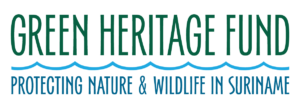Marine Spatial Planning
Together we can make change.
Find out more about Green Heritage Fund Suriname
About Marine Spatial Planning in Suriname

In 2017 the Green Heritage Fund Suriname, WWF Guianas, the Nature Conservation Division of the Suriname Forest Service and the Protected Areas Commission of Guyana started implementation of a EU-financed project, Promoting Integrated Ocean and Participatory Governance in Guyana and Suriname: The Eastern Gate to the Caribbean. The goal of this action is to bring about fair and sustainable use of marine resources and the empowerment of marine resource users in Suriname and Guyana through participatory marine spatial planning.
Enhance and strengthen protection of Suriname’s marine resources through participatory spatial planning, targeted capacity building, and compelling data to produce win-win outcomes that conserve biodiversity and enhance food security, and support socio-economic development compatible with ocean health.
- Safeguard biodiversity
- Enhance knowledge of the marine environment
- Fully engage with and empower marine resource users
- Enhance food security
- Protect livelihoods and support socio-economic development
- Enhanced marine spatial planning
Suriname is part of a unique marine ecosystem, referred to as the North Brazil Shelf Large Marine Ecosystem, which extends from Brazil’s Parnaíba River to Venezuela’s Orinoco River. Runoff from large rivers, such as the Orinoco and the Amazon, make this large marine ecosystem a nutrient-rich and highly productive ecosystem. Unfortunately, in Suriname, the high productivity of its unique marine ecosystem has been exploited by unregulated fishing, and is increasingly being threatened by offshore and nearshore natural gas prospecting, coastal degradation from sand mining, and pollution from inland sources. Consequently, the unique, and sparsely explored, biodiversity of Suriname’s marine environment, and the livelihoods and food security of Surinamese marine resource users are under imminent threat.
What is marine spatial planning?
Marine spatial planning is a planning process with an ecosystem, economic and social approach to the management of human activities in the marine environment. This process promotes the conservation of marine biodiversity and the fair and sustainable use of marine resources. Fulfillment of these objectives “depend on”/require improving decision-making/governance, informed and active participation from stakeholders, and multi-disciplinary information on the marine environment and the human activities that take place in it.
Visit the project website to read more about marine spatial planning in Suriname.

